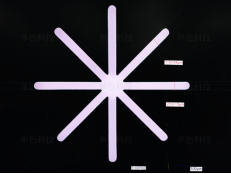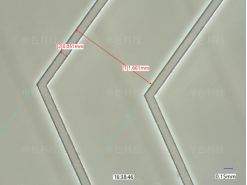In conventional material processing applications using long pulsed lasers (microseconds, nanoseconds, etc.), the main interaction between the laser and the material is the conversion of the laser energy into a thermal effect in order to enable the phenomena of melting and gasification to be removed from the material. However, this process results in the formation of a large and intense heat affected zone (HAZ) due to the accumulation of heat. In precision machining applications, this HAZ can cause unacceptable functional or cosmetic damage through thermal deformation, melting edges, oxidised blackening, residues, burrs and other adverse effects in the material processing area, which not only reduces product quality and yield, but also usually requires the introduction of cumbersome subsequent cleaning steps to eliminate the adverse effects, which undoubtedly increases production costs significantly.
With the continuous development of laser technology and the pursuit of higher processing quality, ultrafast laser processing technology has emerged. Typically, ultrafast laser refers to a laser with a pulse width of less than 10 ps. In particular, femtosecond lasers, as ultrafast lasers with even shorter pulse widths, are gradually being used in laser processing.
Femtosecond laser refers to a laser technology that produces extremely short pulses. Femtosecond (fs) is a unit of measurement of time, with one femtosecond being one trillionth of a second. Femtosecond lasers, as the name implies, are pulsed lasers emitted on a femtosecond time scale. The pulse duration of a femtosecond laser can be from a few femtoseconds to several hundred femtoseconds, which makes it one of the shortest laser pulses available under today's experimental conditions, and as a tool for the extreme manufacture of ultrafast lasers, femtosecond lasers are the shortest laser pulses that can be stably obtained and used in industrial applications.

Compared to common nanosecond and picosecond lasers, femtosecond lasers are characterised by the following three main features:
femtosecond laser pulses have ultra-short pulse durations (pulse widths), usually on the order of 10-15 s. Even light can only travel a distance of 0.3 μm in 1 fs;
femtosecond laser pulses have ultra-high peak power, easily in the order of 1012 W, a peak power that far exceeds the total power of the global power grid;
femtosecond laser pulse after focusing, can form a micron-scale focal spot, the peak energy density in the centre region of the spot can reach the order of 1020 to 1022 W/cm2, which can stimulate an extremely strong local strong electromagnetic field, the strength of this local electromagnetic field is several times higher than the Coulomb force of the nucleus of an atom on the role of its surrounding electrons, which can directly destroy the chemical bonds between the atoms of the material, and destroy the chemical bonds between the atoms inside the material, as well as the chemical bonds between the atoms inside the material. Chemical bonds between the atoms in the material can be directly destroyed, and the material within the electronic instantaneous excitation ionisation, resulting in the material between the positively charged particles due to the strong Coulomb repulsion and the form of plasma eruption to the outside, so as to achieve the removal of the material. This is shown in the figure below:
The ultra-short pulse duration and ultra-high peak power of femtosecond lasers provide unprecedented extreme physical conditions for scientific experimental research, such as high time resolution, high electric and magnetic field strength, high pressure and hot air. It also provides an effective processing tool for today's extreme manufacturing.

The ultra-short pulse width and ultra-high peak power of femtosecond lasers induce non-linear absorption effects in the material, obtaining a focal spot with dimensions much smaller than the diffraction limit, and thus dramatically improving the spatial resolution of the process. In addition, the pulse duration of femtosecond laser is much smaller than the thermal relaxation time. Therefore, there is no heat generated during the process of femtosecond laser processing, commonly known as "cold" processing, can use femtosecond laser to carry out ultra-fine cutting, punching, etching and other processing of any material, which can directly avoid the conventional long-pulse laser processing process, the material due to the accumulation of heat caused by the phenomenon of overheating cracking, oxidation, melting and so on, which means that in the femtosecond This means that during femtosecond laser processing, there is almost no carbonisation, slag, debris and other phenomena affecting the quality of product processing. This simplifies or even eliminates the need for subsequent product cleaning steps, which undoubtedly greatly reduces processing costs and shortens the production cycle. The effect of femtosecond laser processing is shown in the figure below:

Femtosecond lasers can have pulse repetition frequencies as high as megahertz (MHz) or even gigahertz (GHz), and this high repetition frequency means that millions or even billions of laser pulses can be generated per second, dramatically increasing the processing rate. This is particularly important for industrial applications as it can significantly reduce processing time and increase productivity while maintaining the high accuracy and quality of femtosecond laser processing.

The many excellent properties of femtosecond laser ultrafine processing technology make it an irreplaceable processing tool in the field of extreme manufacturing, and it is widely used in semiconductor microelectronics manufacturing, biomedical instruments, aerospace, optical components manufacturing and other fields, which provides important support and solutions for the development of modern science and technology.

Specifically, femtosecond laser processing accuracy can reach the sub-micron level (less than 1 micron), enabling extremely high edge quality and fine structures when processing metals, semiconductors and composites. In microelectronics and semiconductors, for example, femtosecond lasers are able to precisely cut and drill microvias with diameters of less than 10 micrometres and smooth, burr-free edges. This makes them particularly suitable for the fabrication of complex micro- and nanostructures such as integrated circuits, microelectromechanical systems (MEMS) and functional hypersurfaces.


Femtosecond laser processing achieves extremely weak to negligible heat affected zones (HAZ), enabling high precision processing without damaging the surrounding material, and is particularly suited to the processing of heat-sensitive materials such as polymers, glass and biomaterials.

Femtosecond laser equipment also performs well in the fabrication of functional super-surfaces. For example, by using femtosecond laser to process nano~micron periodic surface microstructures on the surface of the material, the material is endowed with some special functions, and the morphology of the surface microstructures can be adjusted to achieve the switching of functions, such as anti-reflection, super-hydrophobic self-cleaning, super-hydrophilic self-impregnation, anti-bacterial and anti-virus, and the surface is dazzlingly colourful, and so on. In addition, through the femtosecond laser on the surface of the material to process the nano-scale microstructure, to significantly increase the surface area of the material surface, to significantly improve the material surface performance, such as rapid heat dissipation, cell adhesion, cell proliferation, and so on.

In the medical field, femtosecond laser devices are widely used in the manufacture of high-precision biosensors and microfluidic chips due to their extremely high processing accuracy and low thermal impact. Such devices are able to perform fine processing without damaging the material, ensuring the integrity and functionality of biomaterials.

In integrated circuit manufacturing, tiny circuit patterns are formed by precision cutting and drilling. In addition, femtosecond lasers play a key role in microelectromechanical systems (MEMS) manufacturing, enabling the precise machining of tiny mechanical and electronic components.

In industrial manufacturing, such as aerospace and automotive manufacturing, precision cutting and machining enables the manufacture of high-precision and complex components, and its high efficiency and quality machining capabilities meet the stringent requirements of modern industrial manufacturing.

Ltd. is headquartered in Guangming District, Shenzhen City, by the advanced laser field of excellent enterprises and scientific research units team set up, dedicated to femtosecond laser micro-nano-processing technology research and application. The company as a domestic femtosecond laser micro-nano-processing equipment for emerging enterprises, with laser optical systems, precision mechanical motion systems, electronic control systems, software algorithms, visual imaging and other complete research and development, application and process experience, the core technical indicators up to the international advanced level. For biomedical, semiconductor microelectronics, aerospace and other fields in many difficult to process materials and components of ultra-fine cold processing to provide a full range of solutions, has been widely used and recognised.
The company gathers excellent talents in the industry, the core technology team has more than 10 years of experience in the field of femtosecond laser. The company's R&D technicians account for more than 60% of the total number of employees, and more than 10% of them have doctoral degrees. At the same time, the company has efficient customisation capability and agile service capability, which can provide customers with efficient and reliable solutions.

